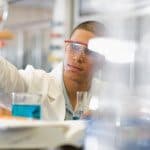When it comes of preventing the effects of tooth decay and gum disease, researchers continue to make new breakthroughs and discoveries. Few branches of science have made the kind of remarkable progress over the last 30 years as dentistry. Patients today have a variety of oral care options available that would of seemed impossible just a few short years ago.
Now science has made another advance in dental technology, as researchers from Case Western Reserve University have discovered a less invasive procedure to extract individual rare immune cells from the mouth to examine how the mouth’s natural defenses prevent inflammation and infection.
- By isolating these specialized immune cells to determine who they fight off diseases in the mouth – or reject foreign tissues, such as in cases of failed organ transplants – researchers hope to discover more about preventing and treating a variety of chronic issues like cardiovascular disease, oral cancer, AIDS and other infectious diseases.Up until today, researchers had to rely on examining and growing immune cell from blood. Examining tissue immune cells allows researcher to discover how they function when interacting with an infection.While the role adaptive immune cells plays in the intestines and stomach is better understood by science, the role these types of cells play in the mouth has yet to become clear. No reliable techniques exist for extracting immune cells from the mouth, which are still easier to extract than from either the intestine or stomach. Furthermore, until now, immune cells gathered from the mouth could not be separated enough or grown to study their activities.
This new breakthrough, however, offers a new method for study with great potential for future advancements in understanding how to prevent oral disease.
The results of this study were published in the journal Biological Procedures.
Method of Discovery
As part of their new method, researchers isolated two important types of immune T lymphocytes that play a key part in fighting oral disease. The cell functions in the body’s adaptive immune system where cell respond to pathogen entering the body.
Researchers took tissue samples from the mouths of mice and washed them multiple times with chemical solutions containing antibiotics and saline. Researcher then disintegrated the tissue using enzymes and salts. The resulting solution was then centrifuged and strained to separate the remaining tissue components until cells remained that could be grown and studied.
With the ability to create an endless supply of usable tissue samples, researchers hope that the dental community will gain a better understanding of how bacteria that causes dental disease attacks the body.
A recent World Health Organization report cited tooth decay and gum disease as global problems, afflict billions of people worldwide. By understanding better how oral bacteria functions in the body, researchers are hopeful that new treatment methods may be developed that could offer relief to those suffering from oral disease and provide better means of prevention.
Until a breakthrough occurs that eliminates plaque and oral bacteria for good, we’ll just have to keep relying on the toothbrush and dental floss as the first line of defense against gum disease and decay.


